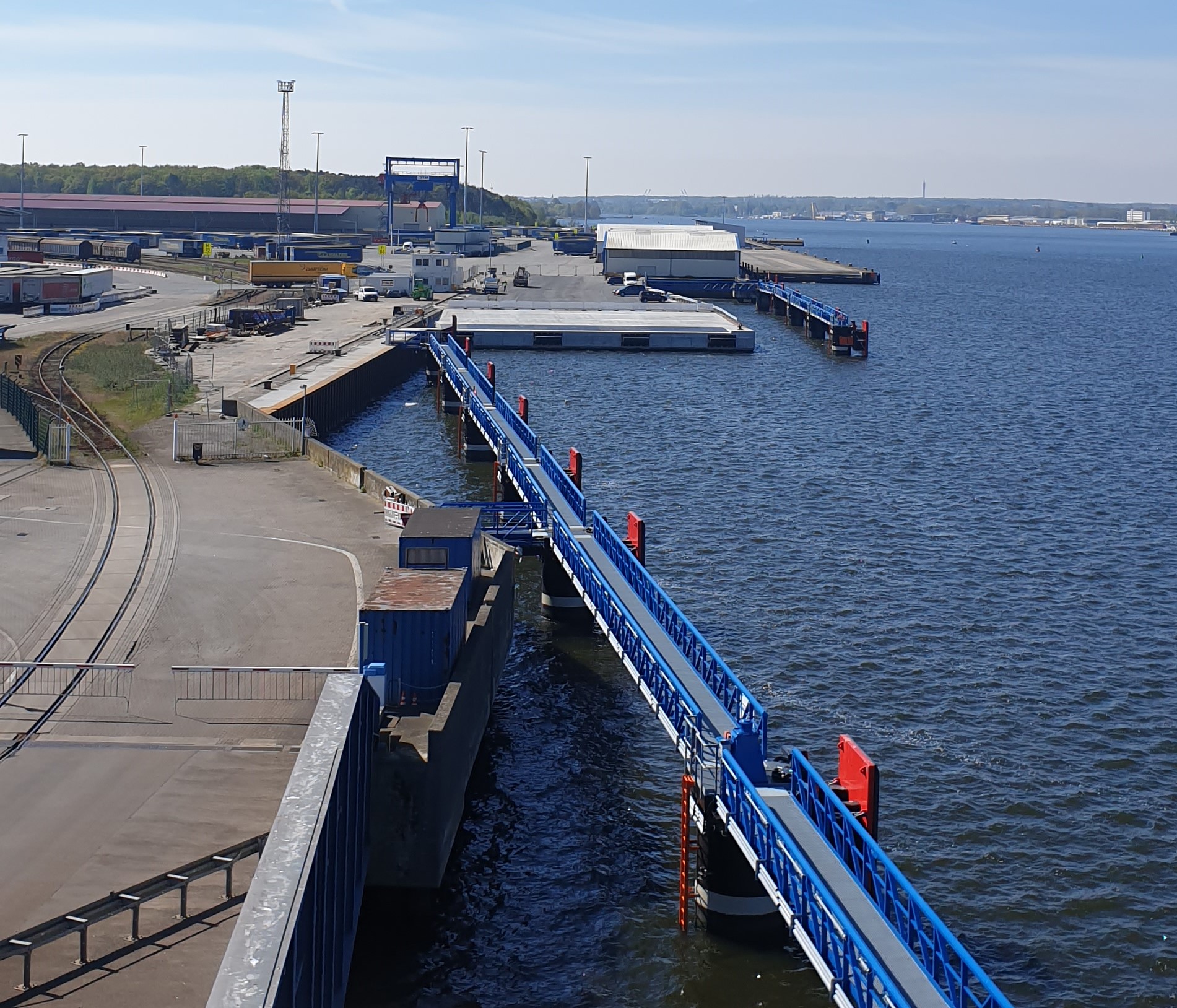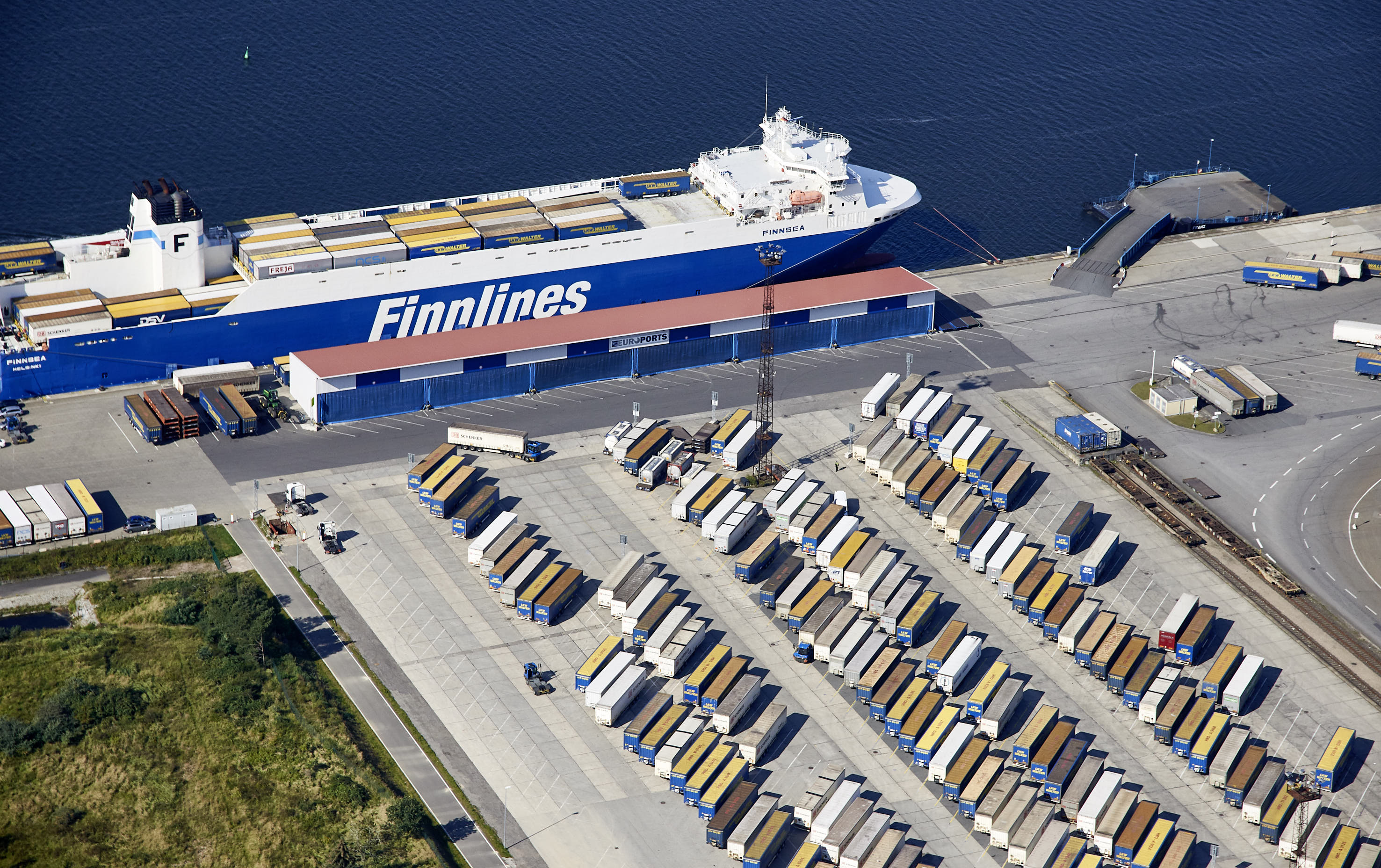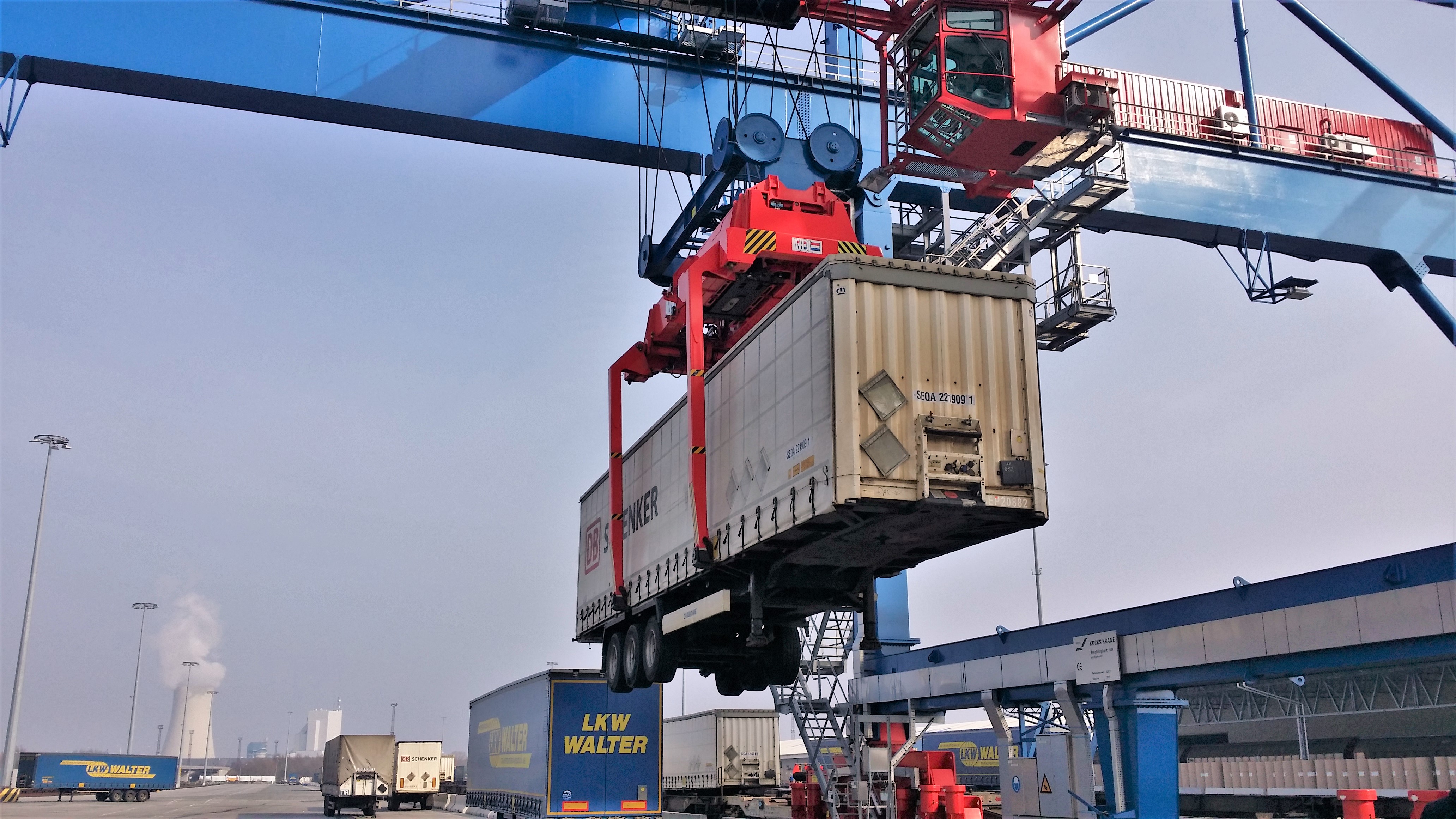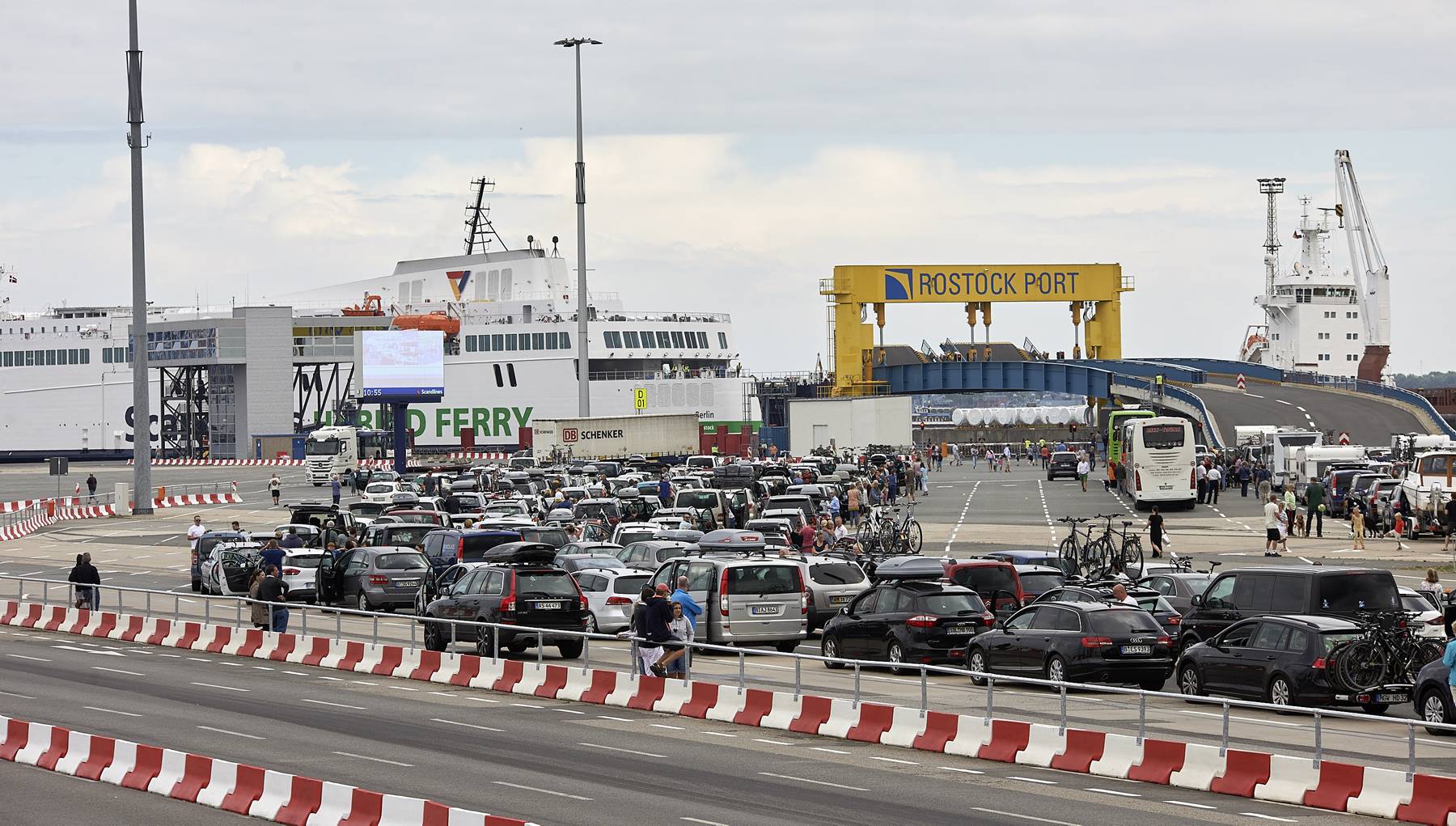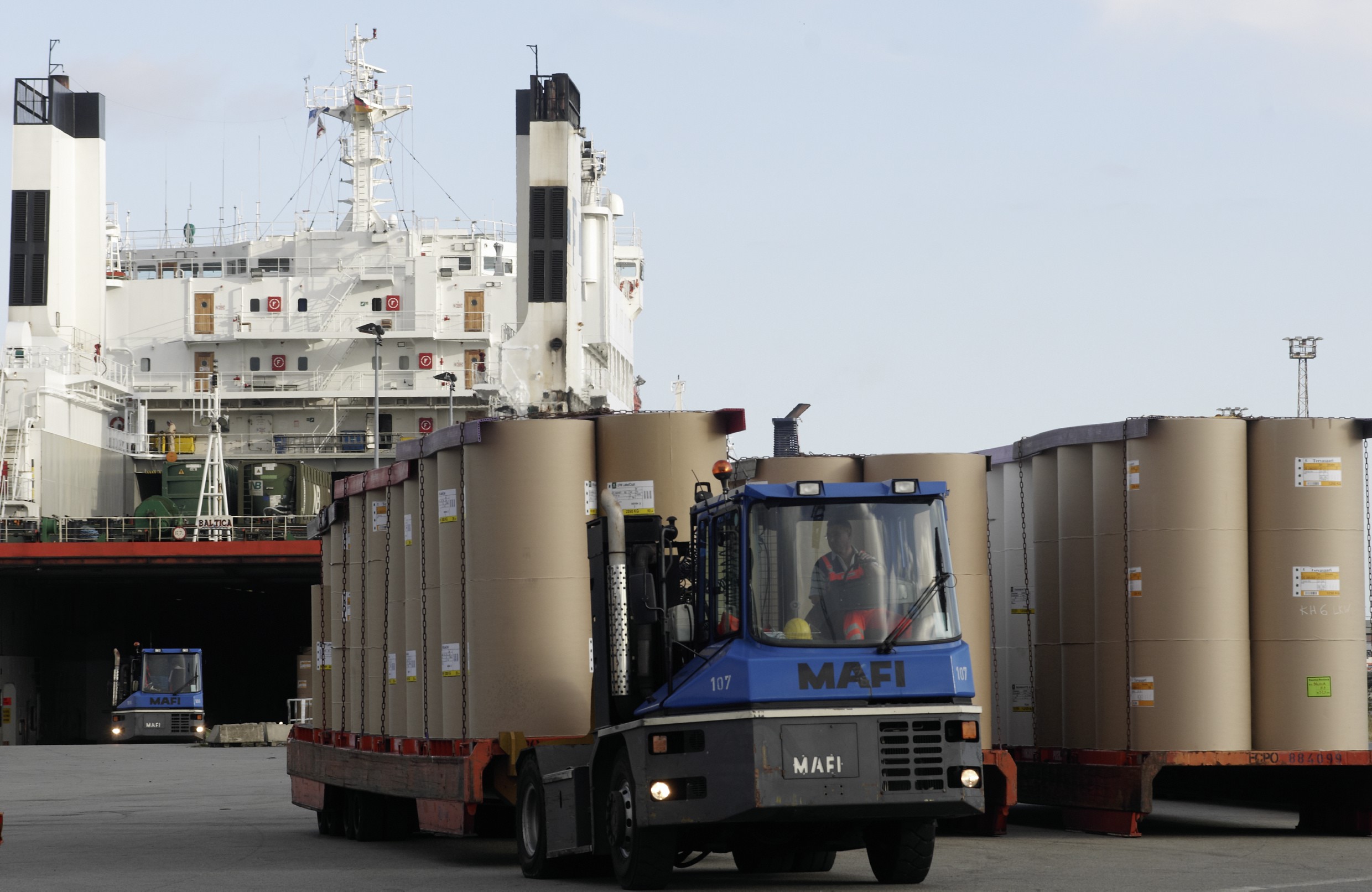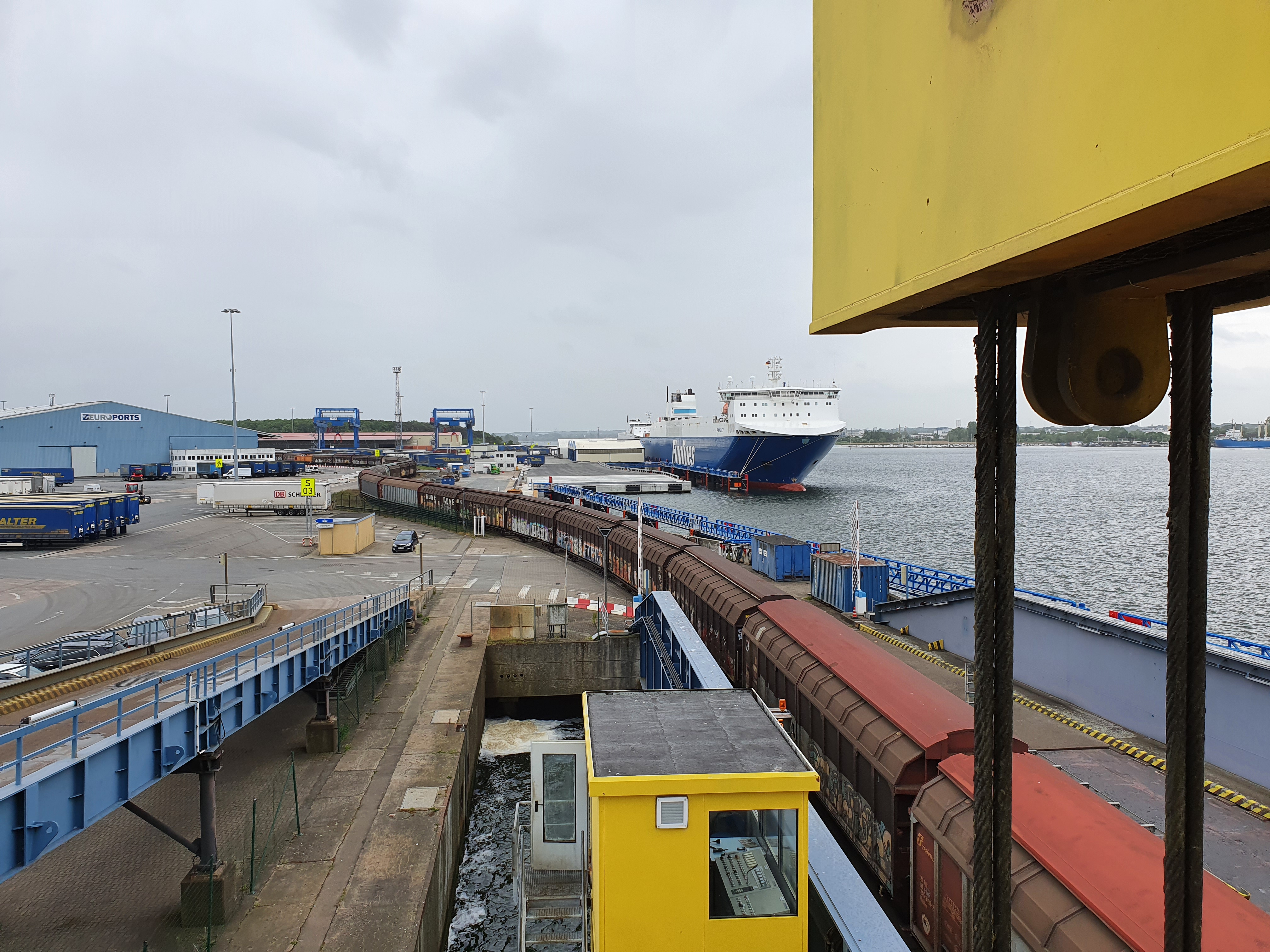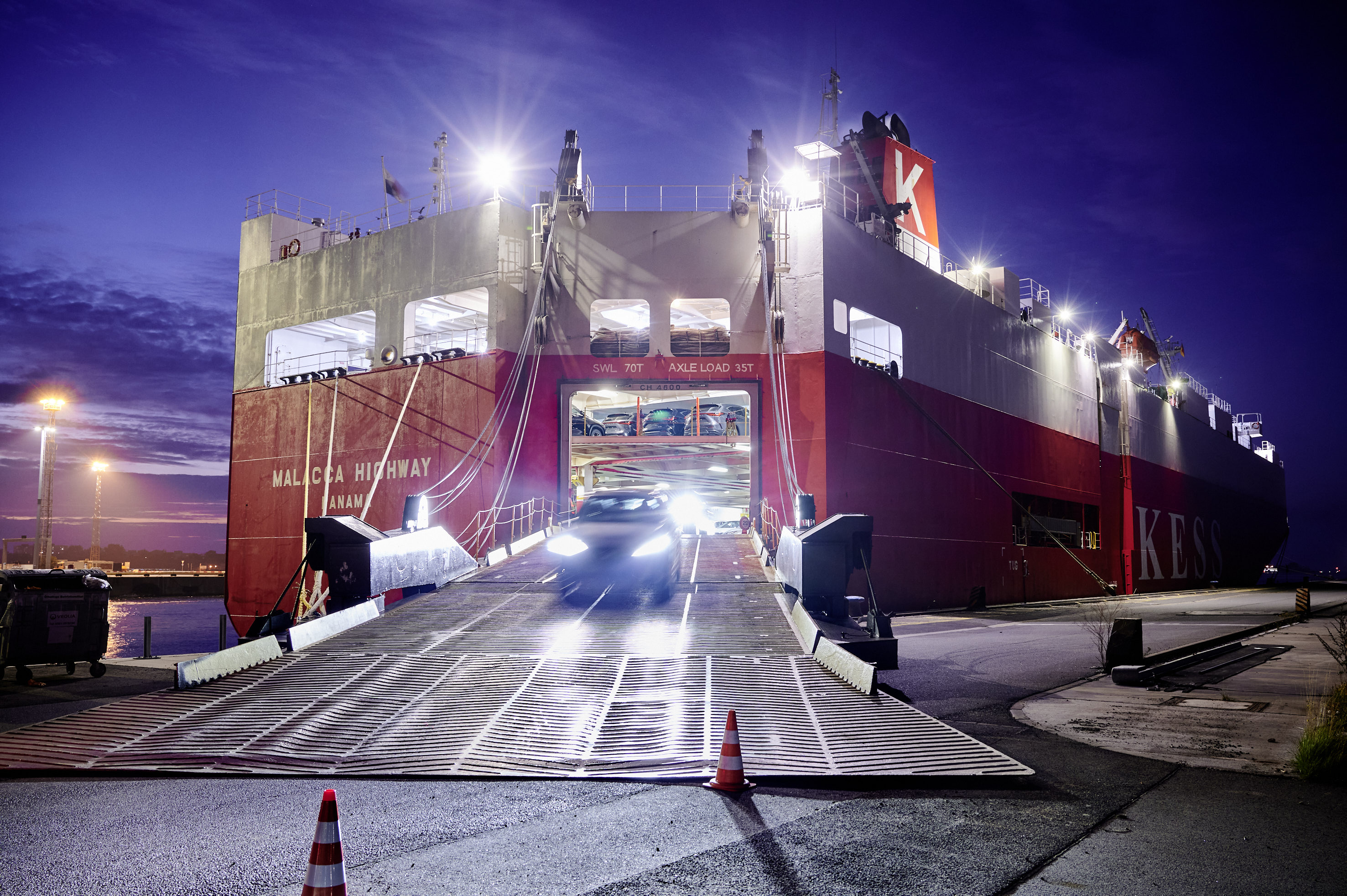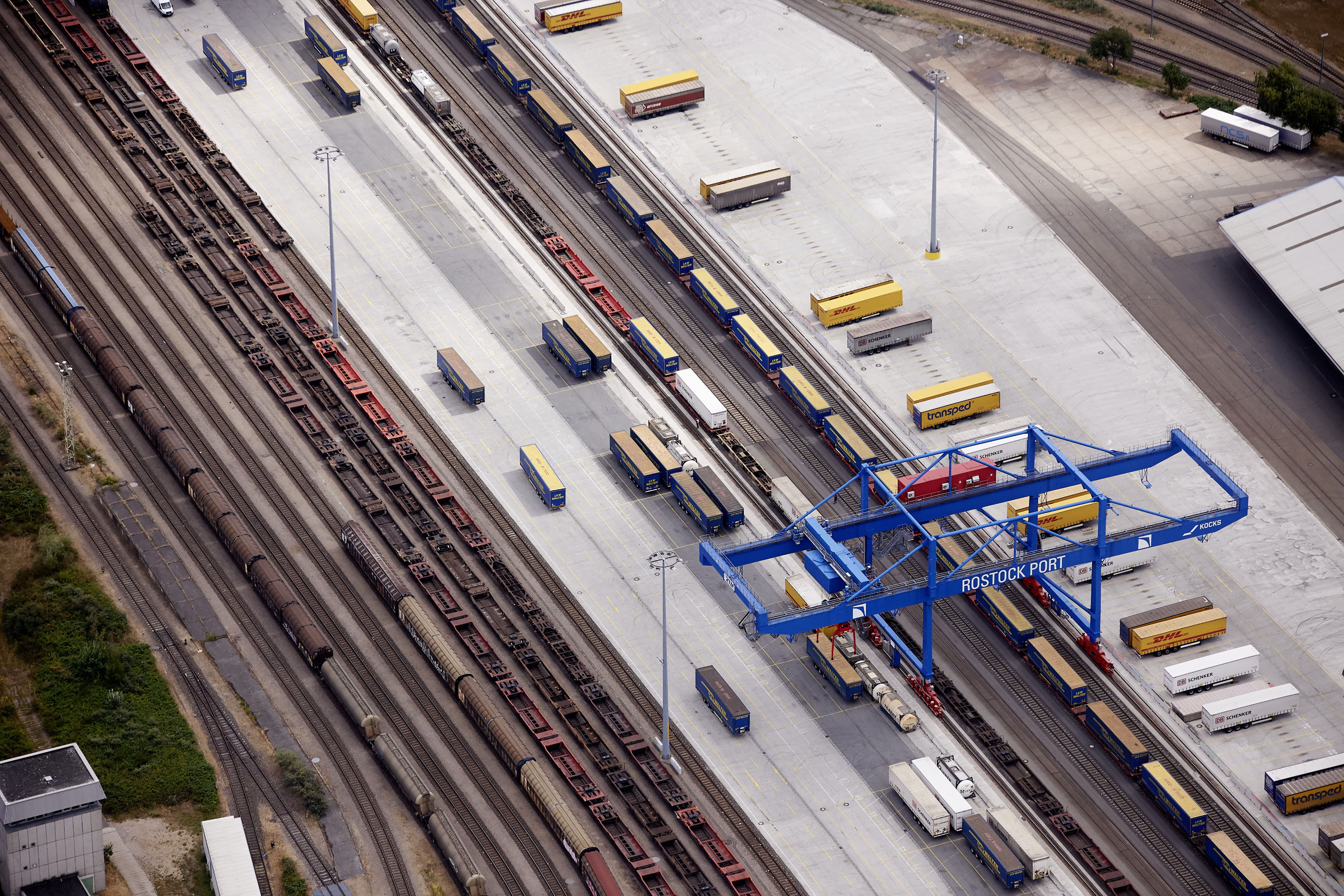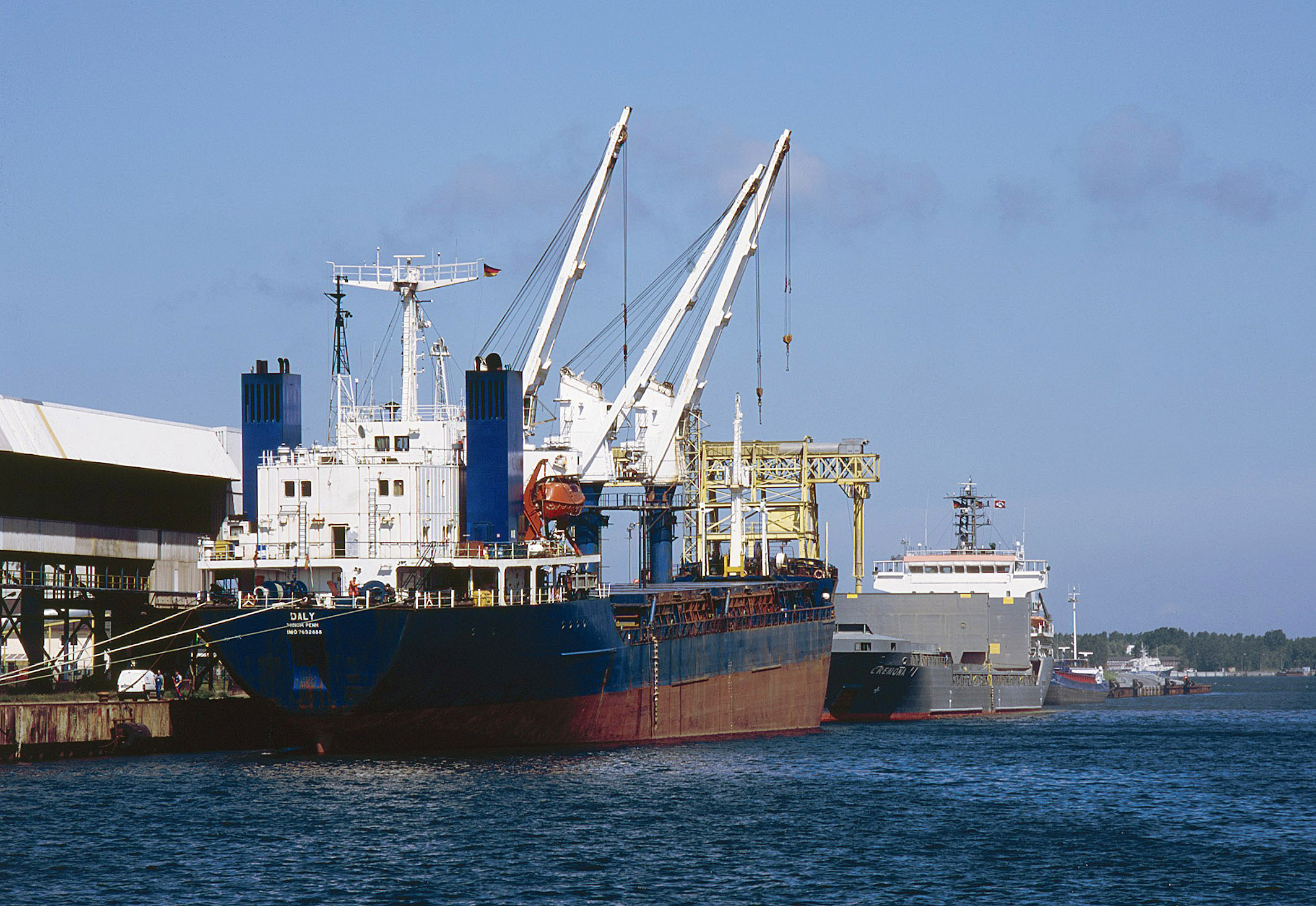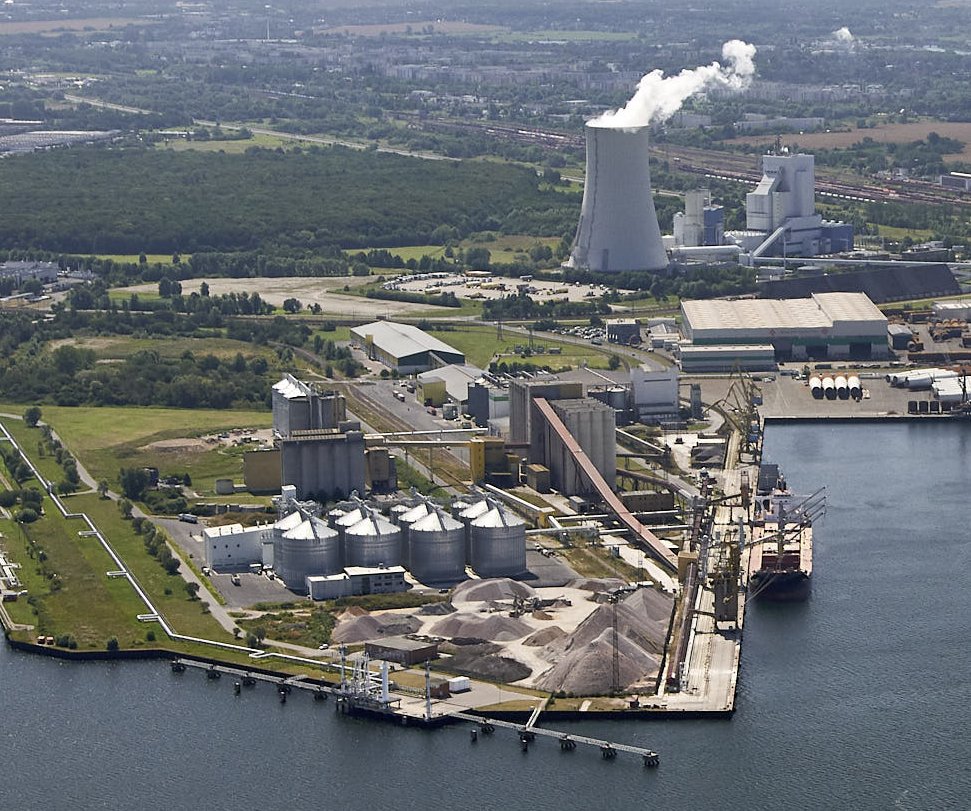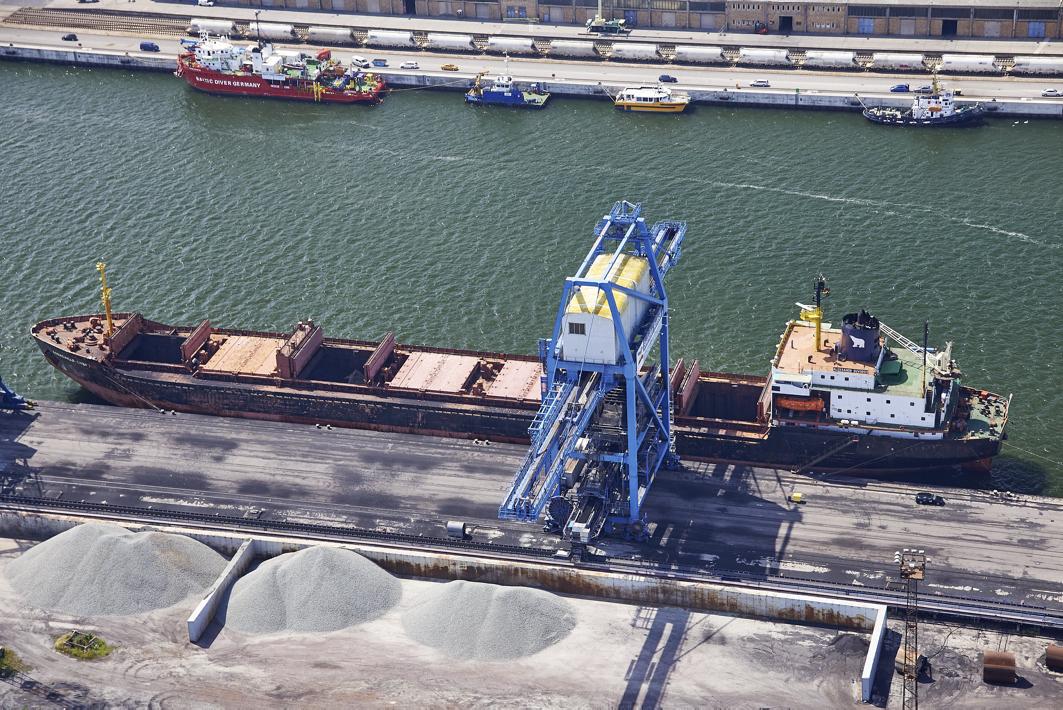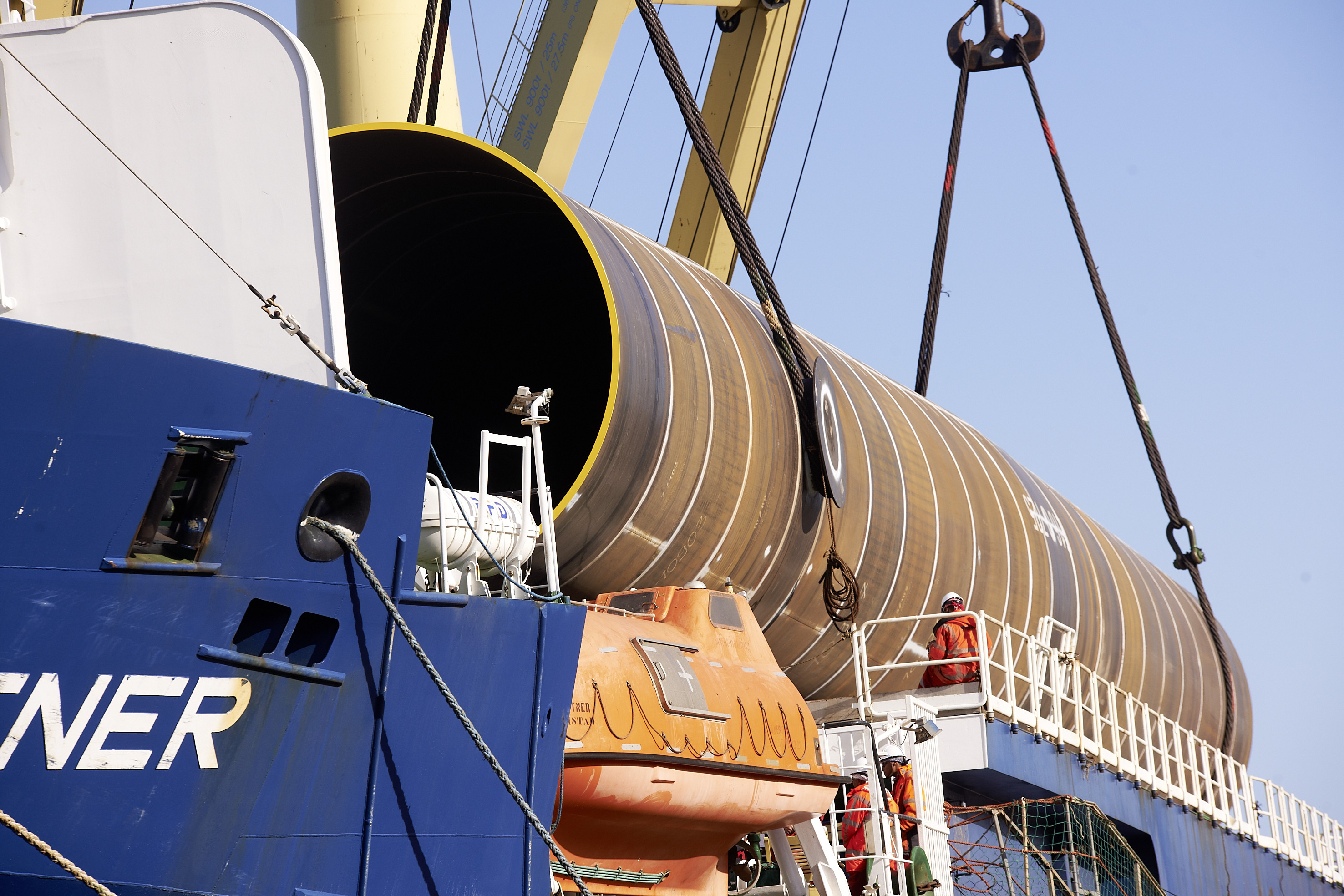General Cargo
Pier II is the heart of general cargo handling. Here are mainly metals, forest products and project cargo as well as container handled. But Pier II is mainly characterized by the transshipment of wind turbines.
Cranes with a lifting capacity of up to 100 tonnes ensure the fast handling of goods. By using two mobile harbour cranes in tandem it is possible to load goods of up to almost 300 tonnes. Furthermore, there are two cranes available for loading and unloading at berth 16, which can be equipped with hooks or grapples. Here, among other things, sheet metal and pipes for EEW Special Pipe Construction GmbH are handled.
Three solid sheds, each 360 meters long, with land and water-side track and road connections, are used for transhipment and storage. A total of 600,000 square meters of open storage and 120,000 square meters of covered storage for general cargo are available at the Rostock seaport.
High & Heavy
With berths 10, 15 and 25, the port offers three berths for the handling of particularly large and heavy goods. At berth 15, the heavy-duty areas were upgraded by ROSTOCK PORT GmbH. This is where a special quay with a heavy-duty rail track was built for a Liebherr crane with a lifting capacity of up to 1,600 tonnes,. This improves the possibilities for handling extremely heavy project cargo as well as the attractiveness of the location for further company relocations for the production and assembly of heavy cargo.
Container
Containers can also be handled at several terminals in the Overseas Port of Rostock. At the General Cargo Terminal of the handling company Euroports Germany, containers are loaded with the help of mobile harbor cranes. In addition, the units can be transported via the close-knit intermodal network with more than 40 weekly train connections and the closely scheduled ferry and roro connections to Denmark, Sweden and Finland with up to 20 departures per day.
The Overseas Port of Rostock not only operates as a transhipment point, but also as a collection and distribution center. In addition, services for packing and reloading of containers and for customs clearance are offered at the site. Partners operate a container depot directly in the port in order to be able to react flexibly to demand. The port of Rostock thus acts as an ideal transport hub for collecting and distributing containers to northern and central Europe.

